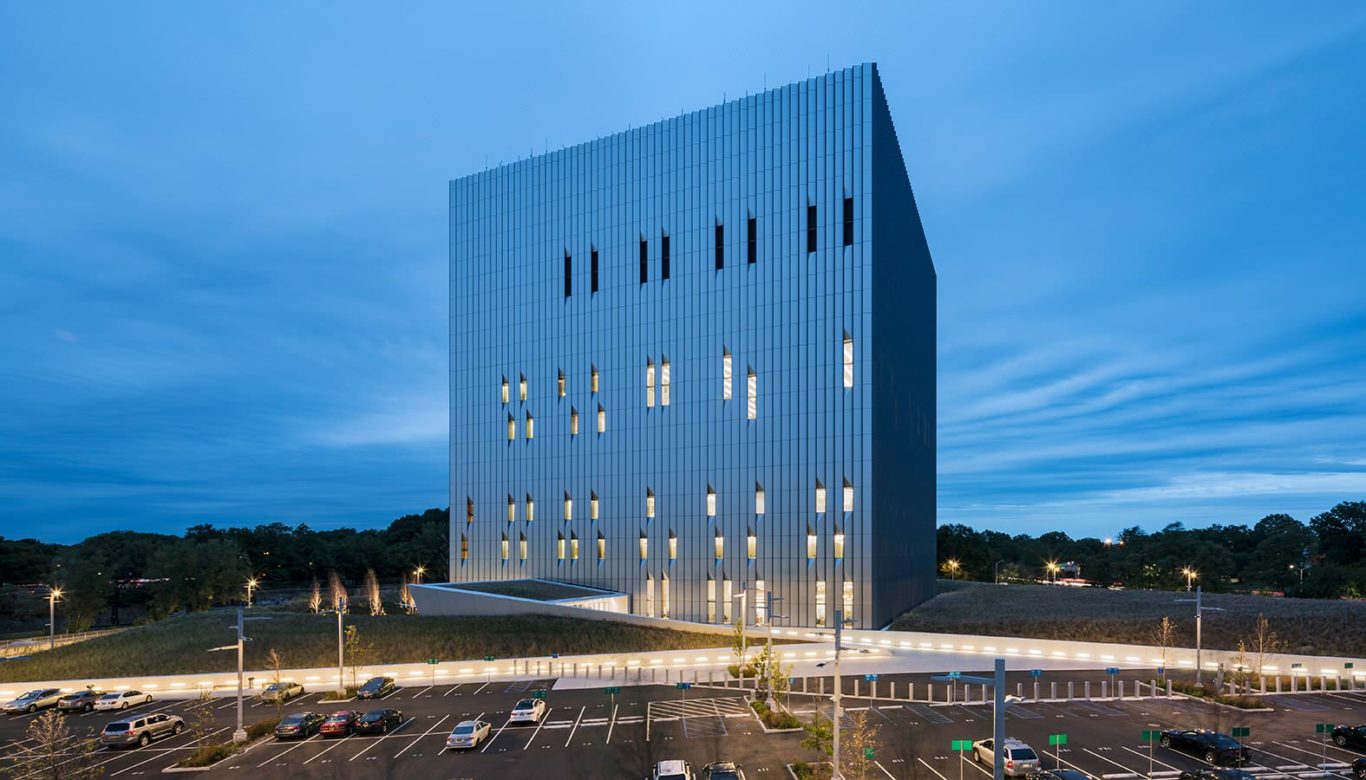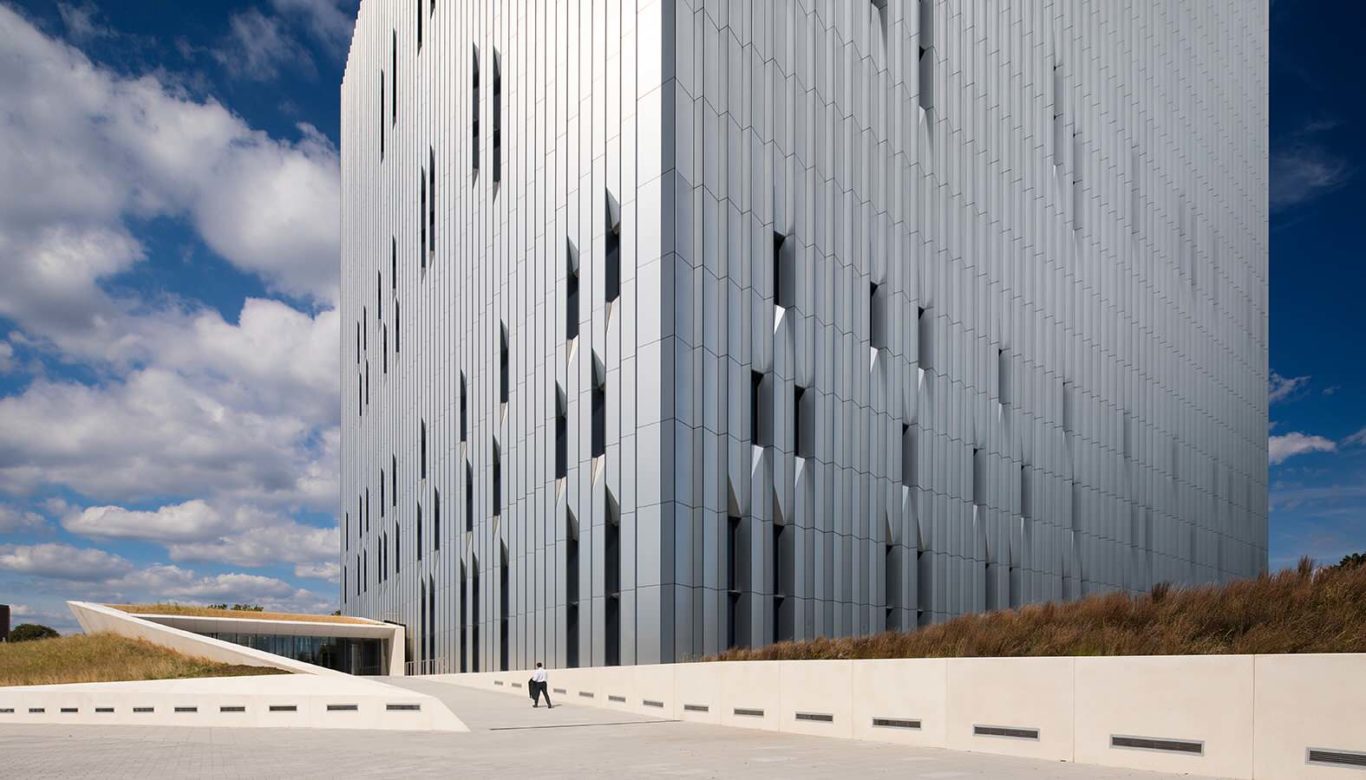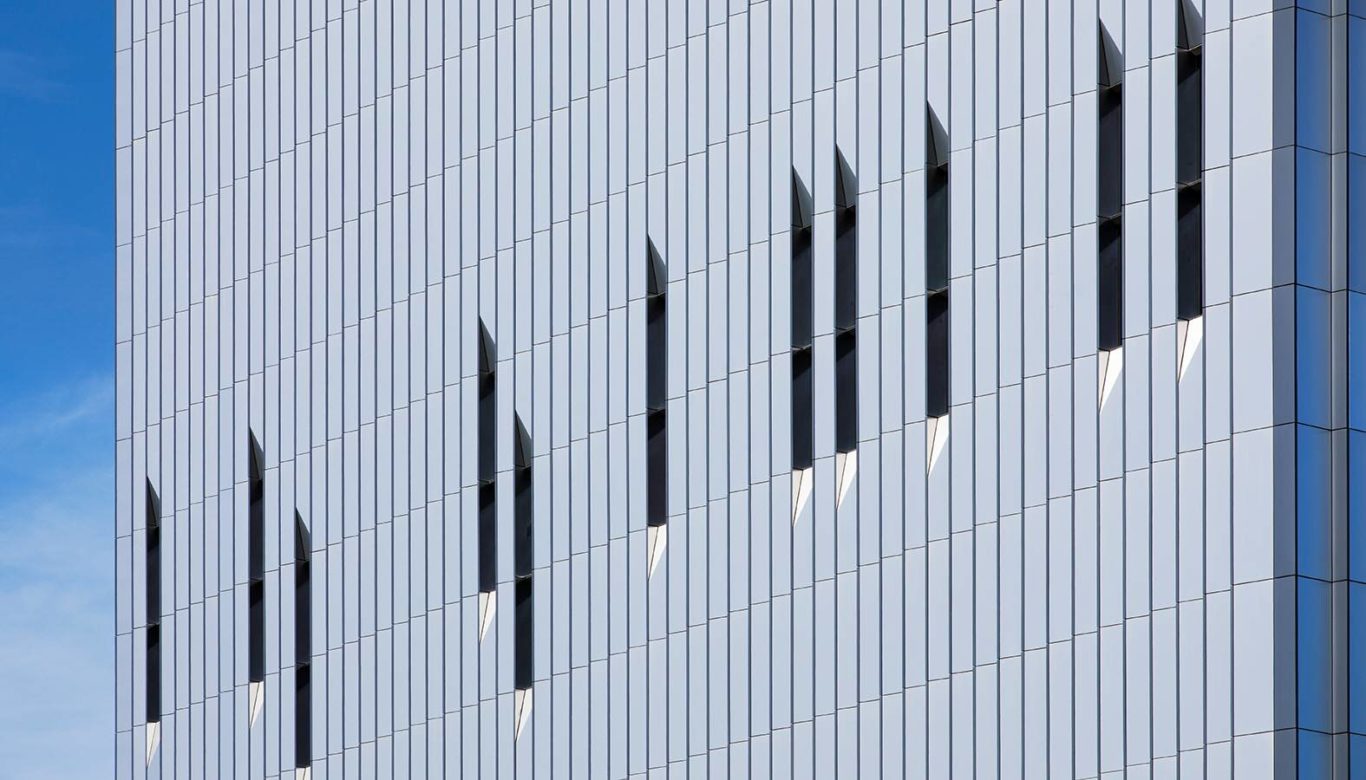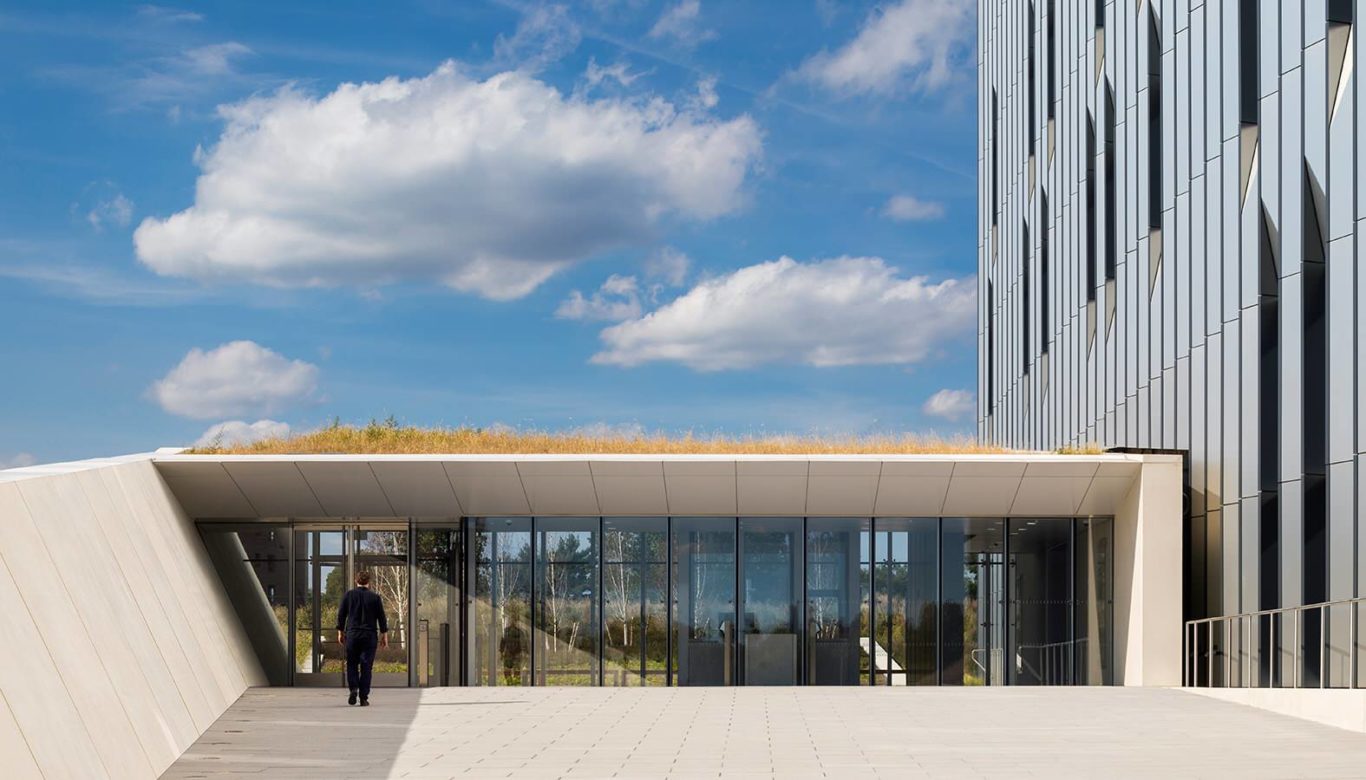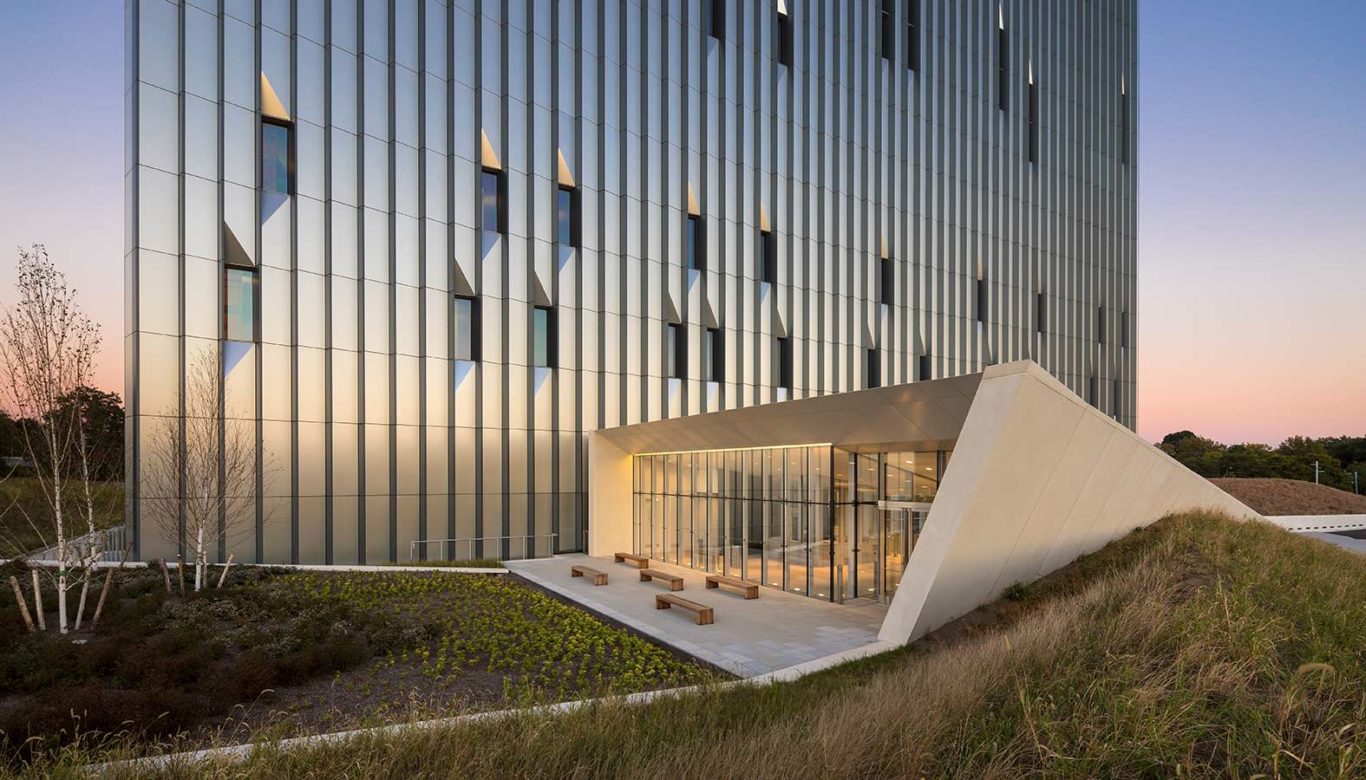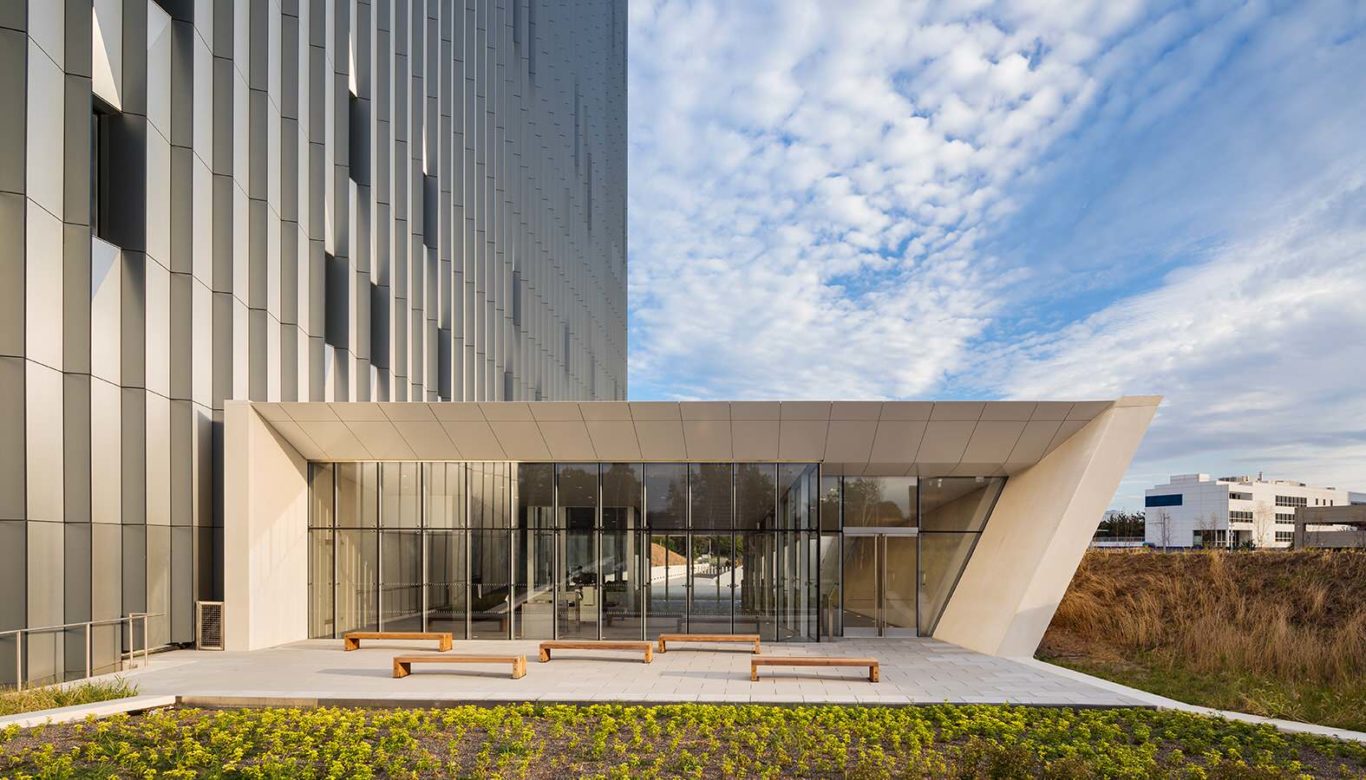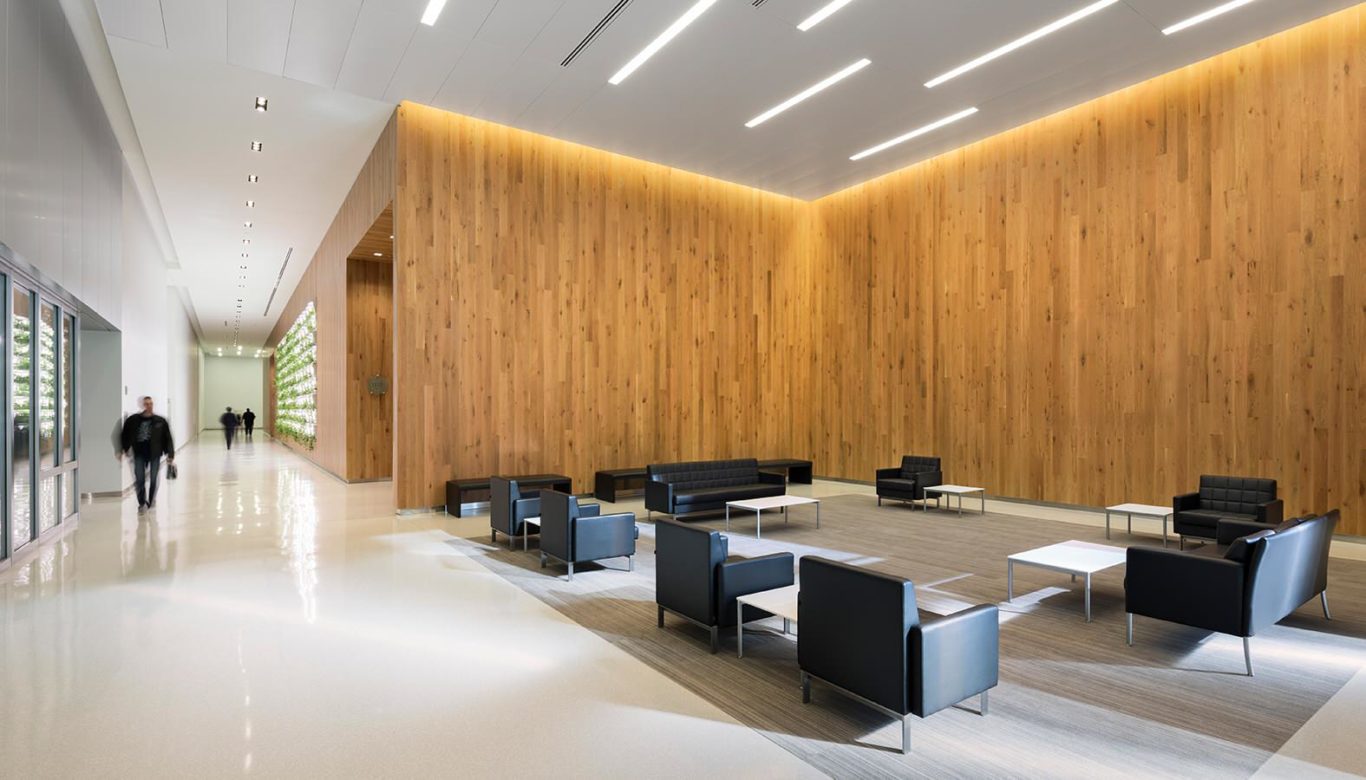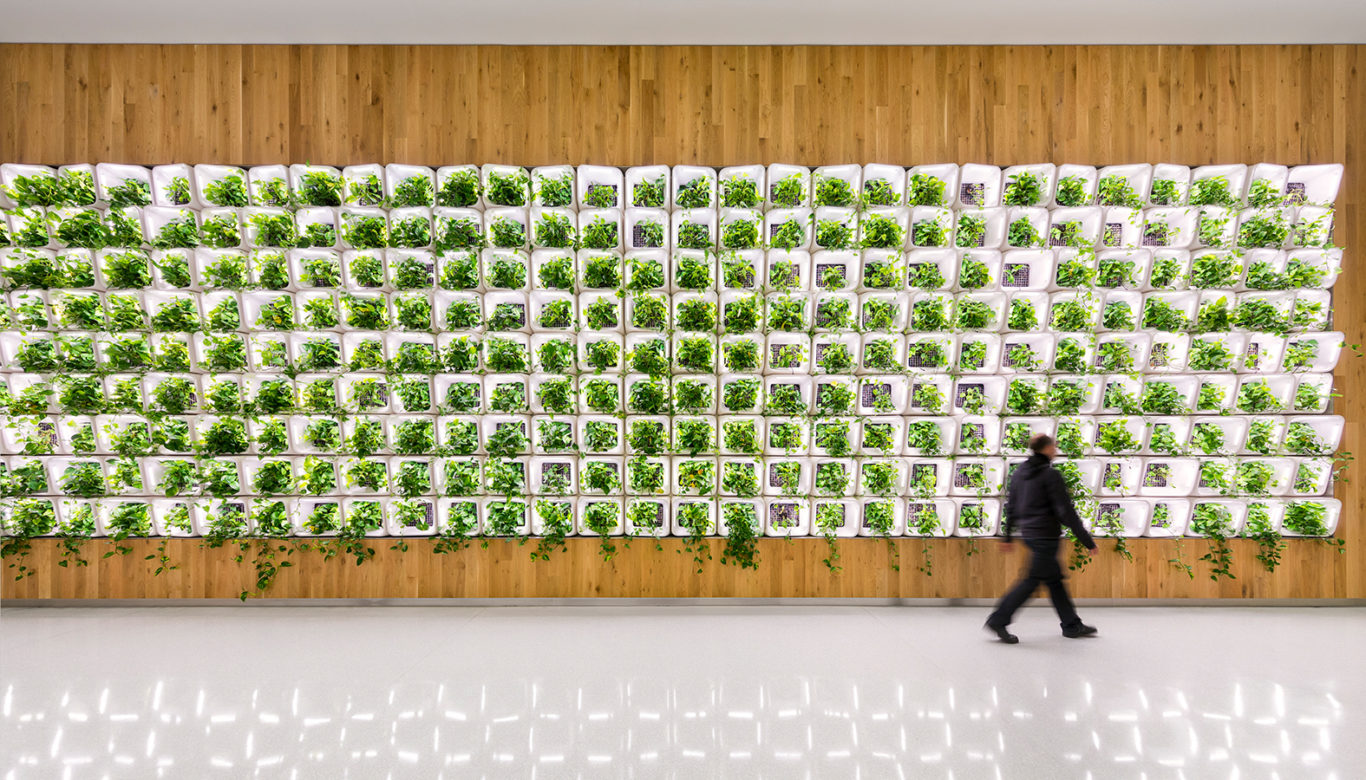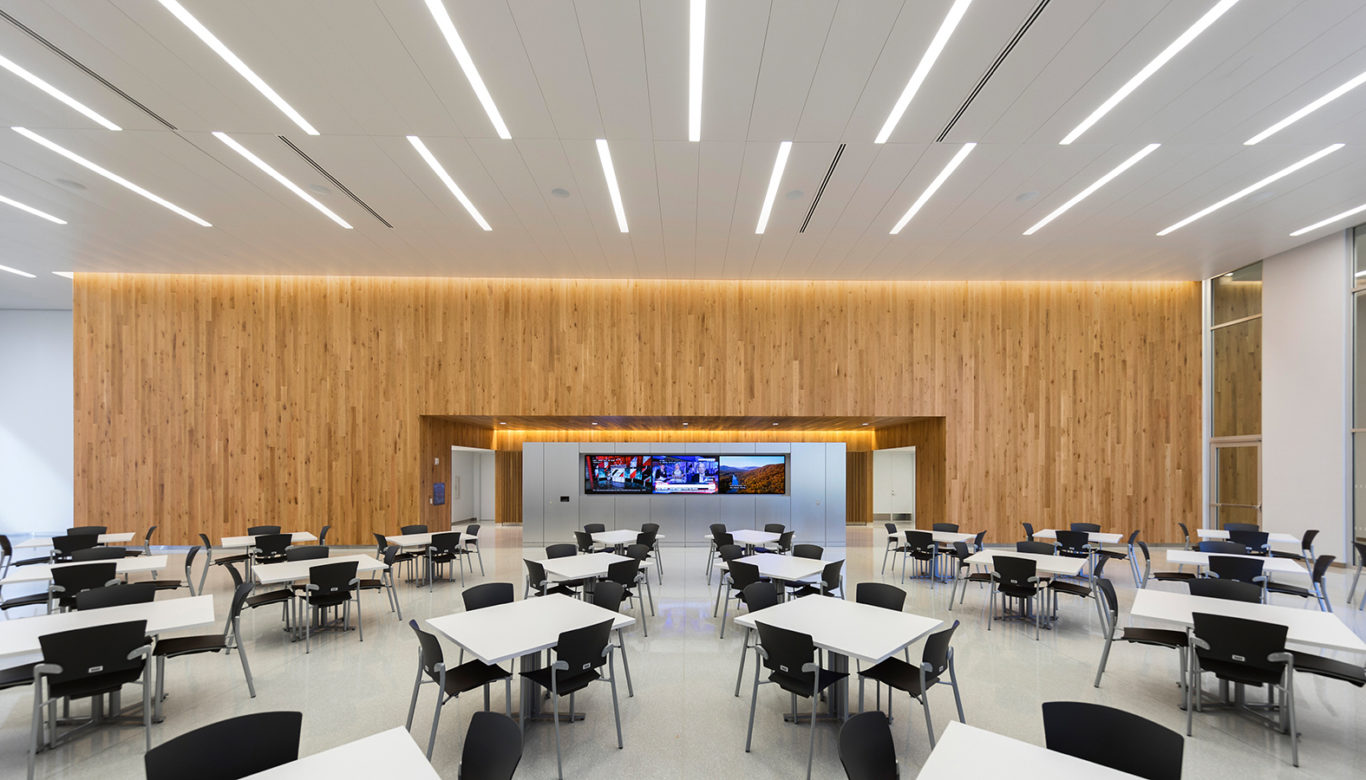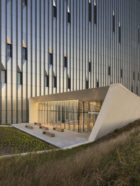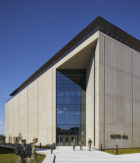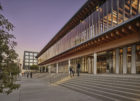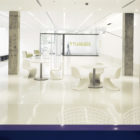Prominently located along the Hutchinson River Parkway and Pelham Parkway in the Bronx, this facility will augment existing 911 services in New York, strengthening the city’s ability to maintain communication in the event of a natural disaster or large-scale emergency. The center is designed to operate continually under adverse conditions and provide redundancy to the city’s primary call center.

The 450,000-square-foot, blast-resistant structure is a perfect cube, with minimal windows due to security concerns. To mitigate the structure’s monolithic appearance, SOM gave it a serrated facade made of recycled aluminum, providing both dynamism and asymmetry. The 9-acre site features a wrap-around sculptural berm of wild grasses. The berm helps protect the building without being oppressively defensive.
Inside, the lobby and cafeteria areas feature a green wall that helps create a soothing environment for stressful call takers. It also acts as a natural air filter, drawing toxins and improving overall indoor air quality. Designed to achieve LEED® Gold certification, the project’s other sustainable strategies include recycled building materials and reduced water use for irrigation.
